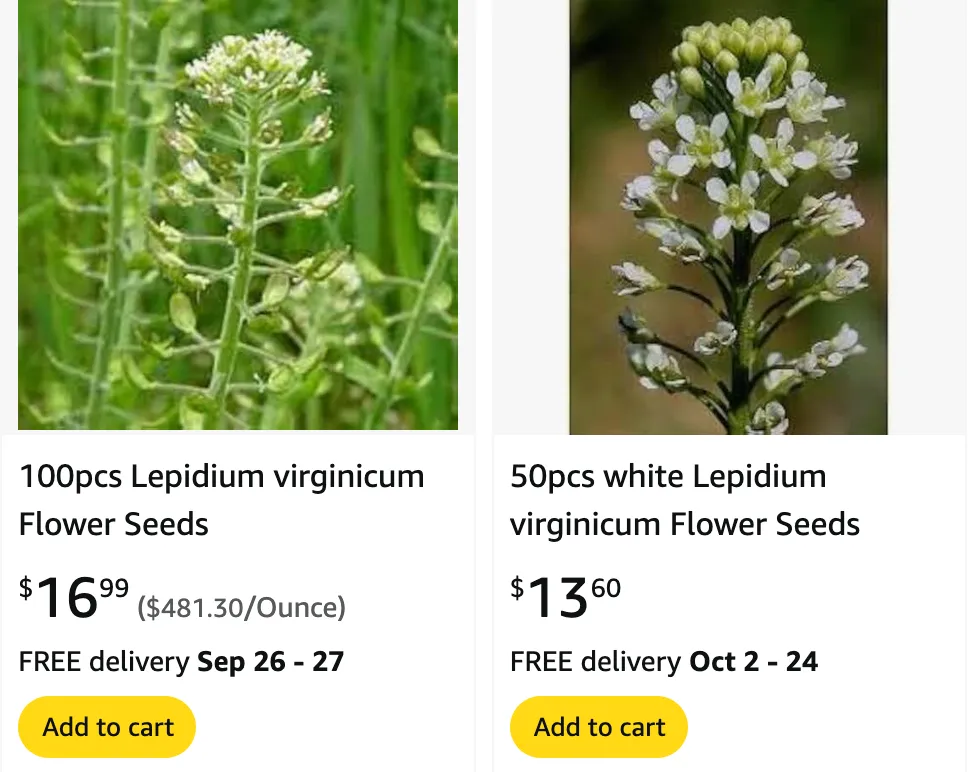
FAQs About Lepidium Virginicum
As an avid plant enthusiast, I’ve often come across questions about Lepidium Virginicum, a fascinating plant also known as Virginia Pepperweed. In this article, I’ll cover the most frequently asked questions about this plant, from its family to care tips and potential issues.
264 Species in Genus Lepidium
What Is Lepidium Virginicum?
Lepidium Virginicum is a perennial herb native to North America. It typically grows in a rosette form and produces small, white or greenish flowers. The plant is recognized for its lance-shaped leaves and its tendency to form dense clusters. Its seeds are sometimes used as a peppery spice in culinary applications, though it’s not as commonly used as other spices from the Brassicaceae family.
What Family Does Lepidium Virginicum Belong To?
Lepidium Virginicum is a member of the Brassicaceae family, commonly known as the mustard family. This family includes a variety of well-known plants such as mustard greens, radishes, and cabbages. Members of this family are often characterized by their four-petaled flowers and their seed pods, which are sometimes referred to as siliques.
How to Care for Lepidium Virginicum?
Caring for Lepidium Virginicum is relatively straightforward. Here are a few tips based on my experience:
- Light: It thrives in full sun to partial shade. In regions with very hot summers, some afternoon shade can be beneficial.
- Soil: It prefers well-drained soil. While it can tolerate a range of soil types, ensuring good drainage is key to preventing root rot.
- Water: Regular watering is necessary, especially during dry periods. However, avoid waterlogging.
- Temperature: It is quite hardy and can withstand a range of temperatures, but it prefers moderate climates.
How to Propagate Lepidium Virginicum?
Propagating Lepidium Virginicum can be done through seeds or divisions. Here’s how you can do it:
- Seeds: Sow seeds directly in the garden in early spring or fall. They should be sown on the surface of the soil and lightly pressed in. They typically germinate in 10-15 days.
- Divisions: In early spring or fall, you can divide the plant by digging up clumps and replanting them. Ensure that each division has a good set of roots.
What to Plant With Lepidium Virginicum?
Lepidium Virginicum pairs well with a variety of other plants. In garden beds, it complements other members of the Brassicaceae family, such as kale and mustard greens. It also works well with ornamental grasses and flowering perennials, providing a nice contrast with their foliage.
Can You Grow Lepidium Virginicum Indoors?
Growing Lepidium Virginicum indoors is possible but less common. It requires a lot of light, so if you’re trying to grow it indoors, ensure it gets ample sunlight or use grow lights. Indoor humidity and temperature should be monitored to mimic its natural outdoor environment as closely as possible.
Is Lepidium Virginicum Toxic?
Lepidium Virginicum is not known to be toxic. In fact, its seeds are sometimes used in culinary applications for their peppery flavor. However, as with any plant, it’s best to ensure that pets and small children do not ingest large quantities of the plant material.
Benefits of Lepidium Virginicum
Aside from its culinary uses, Lepidium Virginicum has a few benefits:
- Ecological: It can attract pollinators such as bees and butterflies to your garden.
- Soil Health: As a member of the Brassicaceae family, it can contribute to soil health by adding organic matter as it decomposes.
Common Problems with Lepidium Virginicum
Despite its resilience, Lepidium Virginicum can face some issues:
- Pests: Watch for aphids and other small insects that may affect its growth.
- Disease: It can be susceptible to fungal diseases if overwatered or if planted in poorly drained soil.
Compare Lepidium Virginicum with Similar Plants
Lepidium Virginicum can be compared to other plants in the Brassicaceae family, such as:
- Lepidium Sativum (Garden Cress): Unlike Lepidium Virginicum, Garden Cress is commonly grown for its leaves, which are used in salads.
- Lepidium Meyenii (Maca Root): Known for its tuberous roots, Maca Root is used as a dietary supplement and is quite different from Lepidium Virginicum in terms of its uses and growth habits.
In summary, Lepidium Virginicum is a versatile and hardy plant that can be a great addition to your garden. Whether you’re interested in its culinary uses, ecological benefits, or simply enjoy its unique appearance, this plant is worth considering. With proper care and attention, it can thrive and add a distinctive touch to your garden or indoor plant collection.
If i die, water my plants!



